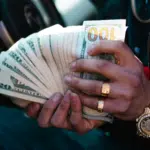There’s a big difference between getting attention and building a career. A lot of artists pour tons of energy into promotion, posting constantly, pushing new releases, doing whatever it takes to get noticed. But without a bigger strategy behind it, all that momentum can fade fast. Great marketing isn’t just about getting your music out there. It’s about crafting a plan that helps the right people discover it, connect with it, and stick around for the long haul. 💪 In this post, you’ll learn how to build a fanbase that lasts, not just one that scrolls past. Let’s get started…
Why Real Music Marketing is More Than Just Promotion… It’s Strategy
Marketing vs. Promotion: What’s the Difference?
Promotion is about the now. Hyping up a new single, announcing a show, or boosting a post to get quick attention, all of this is short-term, fast-moving, and focused on grabbing as many views as possible.
Marketing, on the other hand, is about the big picture. It’s the strategy behind how you present yourself to the world, how you build relationships with your audience, and how you grow your presence over time. It’s not just about what you’re releasing, it’s more about how and why you’re doing it, and who you’re doing it for. While promotion focuses on short bursts of visibility, a true marketing strategy gives you the framework to consistently reach the right audience, build recognition over time, and create a real, lasting career for yourself.
Using Marketing to Build (and Maintain) an Engaged Fanbase
Your goal as an artist is to connect with listeners who genuinely vibe with your music. You don’t want just anyone; you want the people who are likely to actually support you long-term. And that’s the whole point of strategic marketing. Once you’re ready to see some real results, start by following these guidelines:
- Define your target audience: Get specific about who your music speaks to. Think beyond “everyone” and dive into details like age, location, interests, and music habits. Use tools like Instagram Insights, Spotify for Artists, or even simple fan surveys to gather data.
- Focus on the right platforms: Once you know where your audience spends their time (TikTok, YouTube, Spotify playlists, Facebook groups), put your energy there instead of chasing every social app. Quality beats quantity every time.
- Tailor your content: Now, you can craft posts, videos, and messages that speak directly to your audience’s lifestyle and interests. For example, if your fans love behind-the-scenes stories, share more of that. If they’re into your creative process, show it off.
- Build ongoing engagement: You can use email newsletters to share exclusive updates, early releases, or special offers. Or consider creating a Discord server or private Facebook group where fans can interact with you and each other. These spaces turn casual listeners into a community.
- Track and adjust: Regularly check your analytics and fan feedback to see what content performs best and refine your approach. Don’t be afraid to test new ideas and learn from what works and what doesn’t.
By focusing on these steps, you’re moving beyond random promotion to building meaningful, lasting connections with fans who will actually support your music for years to come.
Branding vs. Positioning vs. Storytelling
When it comes to great music marketing, your brand, positioning, and storytelling are the foundation for how you connect with your audience.
- Branding is the identity you create through your visuals, tone, and values. This includes your logo, photos, social media style, and the way you communicate with your fans. Consistency in branding is what helps people recognize you and understand what you stand for.
- Positioning is what makes you unique in the music landscape. It’s how you highlight your distinct sound, style, or message to stand out from other artists. Positioning answers the question: “Why should someone listen to you instead of others?”
- Storytelling is the emotional connection you build by sharing your journey, inspirations, challenges, and victories. It’s what makes your music and brand relatable and memorable.
With these three elements, you can develop a consistent visual style and voice for your social media, press materials, and live shows to build your brand. Now, you can identify what makes you unique, focus your messaging around those points to sharpen your positioning, and work on sharing your authentic stories to form a real connection with your audience. Whether that’s through witty captions, creative videos, deep/heartfelt interviews, etc., all of these show who you are behind the music and why your art matters.
——
⚡️🧠 Dive deeper with these helpful resources…
How To Use Instagram Analytics To Your Advantage as an Artist
How To Use A/B Testing for Better Music Marketing
11 Music Marketing Tools Every Independent Musician Should Be Using
How Proper Metadata Improves Your Music’s Chance Of Success
——
What a Real Strategy Looks Like in Action
Let’s say an independent artist is amping up to release a new project. Instead of posting once and hoping the algorithm delivers, they take a more strategic route. Just like we’ve seen with successful campaigns from artists like CloZee, who paired creative vision with a solid marketing plan to grow real traction. What does that look like exactly? Like this:
🔊 Audience-first planning: Before the release, Clozee spent time identifying her target audience. Maybe for you it’s underground hip-hop fans in major U.S. cities, but for her it’s electronic fans looking for immersive, genre-blending sounds. That clarity is what helps shape everything that follows.
📝 Content with purpose: Next, you would build out a content plan ahead of time, behind-the-scenes clips, early previews, or song breakdowns that resonate with your specific fan base. This isn’t just filler content, by the way. This is meaningful content meant to engage people with what you’re doing, not just tell them about it.
📚 Strategic outreach: Rather than waiting until release week, someone with a real strategy starts early. That means submitting to blogs, pitching to playlists, and presenting their release plan to curators and press contacts weeks in advance, increasing their chance of key placements.
👯♀️ Direct-to-fan connection: They’d also set up a simple email list and invite fans to join through social bios, link-in-bio tools, or during live shows. Subscribers can get early access to the project, behind-the-scenes updates, or even exclusive merch drops. Over time, this becomes a reliable way to speak directly to their most engaged fans, without relying solely on algorithms.
🤝 Smart partnerships: Whether it’s teaming up with influencers in their niche, tapping into community platforms, or aligning with causes that reflect their values, they also use collaborations to widen their reach authentically.
This kind of planning doesn’t just create hype for one moment; it builds momentum. The results speak for themselves. Thanks to this strategic approach, CloZee saw a 25% increase in Spotify monthly listeners, a significant boost in playlist placements, and a growing email list that turned casual listeners into loyal fans ready to support her future projects. Now, THAT is what makes a real career.
And if you want to go even deeper, there are smart ways to work with algorithms and DSP tools to amplify your strategy even more. From optimizing your artist profile to using pre-save links, Spotify Canvas, and more, check out “How to Influence Algorithms & Leverage DSP Tools to Grow Your Audience” to learn more…
Start Thinking Like a Strategist
You don’t need a massive budget or a full team to be strategic. All you need is a plan. (But if your budget is $0, this post is for you.) That plan starts with knowing who you’re actually trying to reach. Take the time to define your audience. Think about what kind of music they love. What platforms do they spend time on? Who else do they listen to? The more specific you get, the easier it becomes to make content and decisions that actually resonate.
Next, it’s important you set real goals. Not vague ones like “get more streams,” but things you can track like growing your email list by 100 people, landing a few playlist placements, or selling out your next local show. With those goals in mind, map out a content calendar that supports them. That way, you’re not scrambling to post the day your song drops. You’ve already planned out teasers, behind-the-scenes clips, countdowns, and the kinds of posts that build interest and connection leading up to the release.
Don’t let the strategy stop after release day, either. Keep the momentum going by sharing post-release content, interacting with fans who tag you, putting out remixes or alternate versions, or even running a giveaway tied to the project.
If you really want to streamline your strategy, check out our FREE checklist: “The Ultimate Release Checklist for Independent Artists”. With this guide, you’ll learn things like:
- Step-by-Step Guidance: Detailed milestones for every stage of your release.
- Industry Best Practices: Proven strategies to maximize your reach and impact.
- Pro Tools & Resources: Tips on leveraging the latest tools for distribution, analytics, and promotion.
And through it all, always pay attention to the data. Your Spotify for Artists dashboard, Instagram insights, and email open rates will show you what’s landing and what’s not. Because good marketing isn’t a guessing game; it’s about learning what works and adjusting as you go.
To wrap things up…
If you really want to have a career that can support you in this industry, you need to focus on more than just streams. With the right strategy to back you up, you can build momentum that lasts beyond a single TikTok or a one-hit wonder. Focus on forming genuine connections, creating meaningful content, and making data-driven decisions to grow a real fanbase that will support you throughout the ups and downs. And by treating your career as a long-term project rather than a series of one-off moments, you create a foundation for ongoing growth and opportunities without limits.
Good luck!



